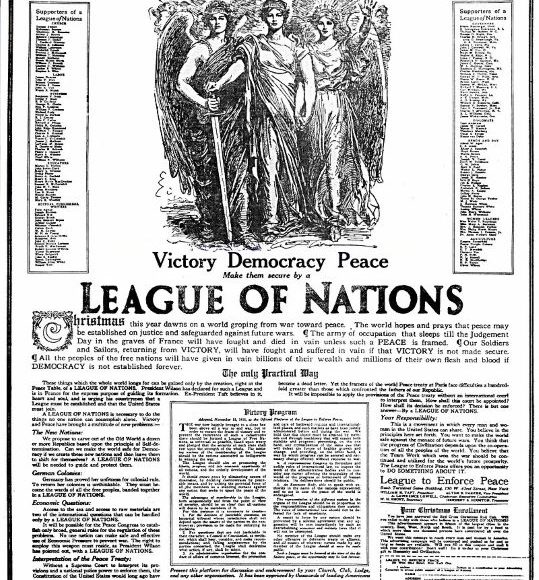April 20 in History
1946 – The League of Nations officially dissolves, giving most of its power to the United Nations
Founded on January 10, 1920, the League of Nations, the world’s first intergovernmental organization whose principal mission was to maintain world peace ceased operations on this day in April 1946, with many of its components relocated into the new United Nations.
Founded by the Paris Peace Conference that ended the First World War, the League’s primary goals, stated in its Covenant, included preventing wars through collective security and disarmament and settling international disputes through negotiation and arbitration. Its other concerns included labour conditions, just treatment of native inhabitants, human and drug trafficking, the arms trade, global health, prisoners of war, and protection of minorities in Europe.
The Covenant of the League of Nations was signed on June 28, 1919 as Part I of the Treaty of Versailles, and it became effective with the rest of the Treaty on January 10, 1920. In 1919, US president Woodrow Wilson won the Nobel Peace Prize for his role as the leading architect of the League.
The diplomatic philosophy behind the League represented a fundamental shift from the preceding hundred years. The League lacked its own armed force and depended on the victorious Allies of World War I (Britain, France, Italy and Japan were the permanent members of the Executive Council) to enforce its resolutions, keep to its economic sanctions, or provide an army when needed. The Great Powers were often reluctant to do so. Sanctions could hurt League members, so they were reluctant to comply with them. During the Second Italo-Ethiopian War, when the League accused Italian soldiers of targeting International Red Cross and Red Crescent Movement medical tents, Benito Mussolini responded that “the League is very well when sparrows shout, but no good at all when eagles fall out.”
At its greatest extent from September 28, 1934 to February 23, 1935, it had 58 members. After some notable successes and some early failures in the 1920s, the League ultimately proved incapable of preventing aggression by the Axis powers in the 1930s. The credibility of the organization was weakened by the fact that the United States never joined, and Japan, Italy, Germany and Spain quit. The Soviet Union joined late and was expelled after invading Finland. The onset of the Second World War in 1939 showed that the League had failed its primary purpose; it was inactive until its abolition. The League lasted for 26 years; the United Nations (UN) replaced it in 1946 and inherited several agencies and organizations founded by the League.
-Wikipedia
Photo Caption -The League to Enforce Peace published this full-page promotion in The New York Times on Christmas Day 1918. It resolved that the League “should ensure peace by eliminating causes of dissension, by deciding controversies by peaceable means, and by uniting the potential force of all the members as a standing menace against any nation that seeks to upset the peace of the world”- Wikipedia



Comments are closed, but trackbacks and pingbacks are open.